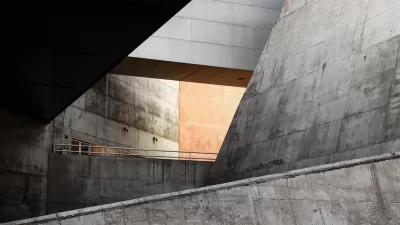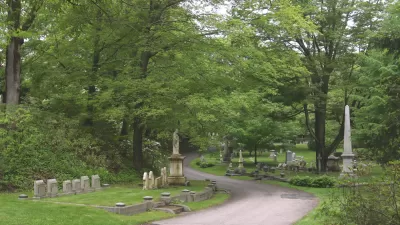Author and urbanist Witold Rybczynski looks at new housing in the aftermath of World War II compared to today. Why are new houses so much more expensive now than they were then?
"The first Levittown was on Long Island, the second in Bucks County, Pennsylvania, and the third in New Jersey. The Long Island project, because it was the first-and the closest to New York City-is the best known, but the Bucks County development, which began in 1951, was larger and more comprehensively planned and designed. At that site, the more than 17,000 homes on nearly 6,000 acres were intended chiefly for workers employed at a nearby steel plant. The largest and most expensive of the six model homes, the Country Clubber, was for supervisors and executives, but the three-bedroom Levittowner was the workhorse of the development. It sold for $9,900, which would equal $82,000 today."
"The continuing popularity of the Levittowner after more than half a century does not mean that the demands of home buyers haven't changed over time...modern buyers expect to personalize their homes. In response, while today's builders still sell predesigned models, they also offer scores of options: alternative façades, different materials, a variety of interior finishes, and 'extras' such as upgraded kitchens, higher ceilings, and add-on sun rooms."
"What would such a house sell for? In 1951, the price of the original Levittowner ($9,900) was three times the national average annual wage ($3,300). In 2008, with an estimated national average wage of $40,500, a similarly affordable house should have a sticker price of $121,500. Yet according to the Census Bureau, even in the current declining market the median price for a new single-family house in the first quarter of 2008 approached twice that: $234,100. So, the price of a modern Levittowner would have to be nearly 50 percent cheaper than that of today's average new house. Easy, you say, just make the house 50 percent smaller, about 1,200 instead of 2,469 square feet. But it's not that simple. In most metropolitan areas, the selling price of such a house would still be more than $200,000, considerably more than $121,500. "
Thanks to Franny Ritchie
FULL STORY: LINK

Alabama: Trump Terminates Settlements for Black Communities Harmed By Raw Sewage
Trump deemed the landmark civil rights agreement “illegal DEI and environmental justice policy.”

Study: Maui’s Plan to Convert Vacation Rentals to Long-Term Housing Could Cause Nearly $1 Billion Economic Loss
The plan would reduce visitor accommodation by 25% resulting in 1,900 jobs lost.

Planetizen Federal Action Tracker
A weekly monitor of how Trump’s orders and actions are impacting planners and planning in America.

Wind Energy on the Rise Despite Federal Policy Reversal
The Trump administration is revoking federal support for renewable energy, but demand for new projects continues unabated.

Passengers Flock to Caltrain After Electrification
The new electric trains are running faster and more reliably, leading to strong ridership growth on the Bay Area rail system.

Texas Churches Rally Behind ‘Yes in God’s Back Yard’ Legislation
Religious leaders want the state to reduce zoning regulations to streamline leasing church-owned land to housing developers.
Urban Design for Planners 1: Software Tools
This six-course series explores essential urban design concepts using open source software and equips planners with the tools they need to participate fully in the urban design process.
Planning for Universal Design
Learn the tools for implementing Universal Design in planning regulations.
Caltrans
Smith Gee Studio
Institute for Housing and Urban Development Studies (IHS)
City of Grandview
Harvard GSD Executive Education
Toledo-Lucas County Plan Commissions
Salt Lake City
NYU Wagner Graduate School of Public Service





























